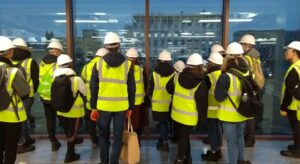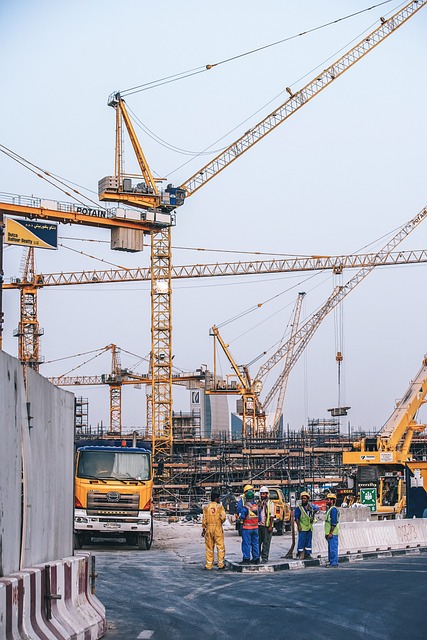Buildings for Business: Getting it Right.
Building for businesses is a special job. These buildings are not just for work, but they’re part of the city's life. We make sure that these buildings are safe and set up right for the businesses that will use them.
Reports That Help You Understand
Our
reports are not just paperwork; they’re a promise that we’ve checked everything well. They tell you about the condition of your building, what problems there might be, and what you should do about them. This helps you make good decisions for your building.

Different Buildings, Different Needs
Homes and business buildings have different designs because they serve different purposes. Homes should be cozy and safe for families, while business buildings should be strong and ready for work. Here’s what we focus on to make sure all buildings are up to the job:
Foundations: The Groundwork of Strength
The foundation is like the feet of a building. It has to be very strong to hold up everything above it. We check the ground to choose the right kind of foundation, whether it’s for a one-story house or a tall office building.
Beams and Columns: The Skeleton of a Building
Beams (the horizontal parts) and columns (the vertical parts) are the skeleton of a building. They need to be placed correctly and be strong enough to carry the weight of the building. This is really important in places like Newcastle where we have different kinds of buildings.
Materials: Choosing the Right Stuff
The materials we use, like concrete, steel, or wood, need to be chosen based on how the building will be used. For example, steel is very strong and good for big buildings, while wood can be perfect for homes.
Safety Features: Keeping People Safe
Safety features like fire escapes, strong doors, and safe electrical wiring are very important in all buildings. We make sure these are all designed and put in the right way.
Energy Efficiency: Saving Power and Money
We also think about how to make buildings use less energy. This means they will be cheaper to run and better for the planet. We might suggest special windows or insulation to keep heat in.
Our Technical Expertise: Why It Matters
As structural engineers, we use our knowledge of physics and materials to make buildings safe and strong. Here's how:
Load-Bearing Analysis: Holding Up the Weight
We calculate how much weight a building can hold. This includes the people and furniture inside, and even the pressure from wind or the weight of snow.
Earthquake Readiness: Preparing for Shakes
In areas where earthquakes can happen, we design buildings to move safely with the shaking ground. This can save lives and keep buildings standing.
Weatherproofing: Keeping the Weather Out
We make sure that buildings can keep out rain and wind. This means looking at how the roof is shaped and what kind of outside walls are used.

Accessibility: Making Space for Everyone
It’s our job to think about everyone who might use a building. This means creating
ramps for wheelchairs and designing stairs that are easy for all to use. But our work doesn’t stop at entryways and exits; it encompasses every aspect of the building’s design to ensure it is welcoming and usable for everyone. We consider door widths, elevator access, and even the height of switches and controls.
Structural Durability: Lasting Through the Years
Buildings aren’t just built for today; they’re built to last. We examine the durability of materials and
designs to ensure that the building will not only stand up now but also in the future. This includes studying how materials age over time and how different weather conditions affect them.
Seismic Design: Standing Strong in Earth's Shakes
In areas at risk for earthquakes, our designs must consider
seismic forces. We do this by ensuring the structure can bend and sway without breaking. This might involve special joints and materials that can absorb and dissipate the energy of an earthquake.
Building Codes: Following the Rules
Building codes are like the rule books for construction. We make sure everything we do follows these rules. They tell us how thick walls should be, how much weight a floor must hold, and much more. These codes help ensure that every building is safe and strong.
Energy Modeling: Planning for Efficiency
We use computer models to predict how much energy a building will use. This helps us achieve the need of less energy for heating, cooling, and lighting. By choosing the right insulation and designing for natural light, we can make buildings more comfortable and less costly to run.

Acoustics: Controlling Sound
The way sound moves through a building is important, too. In places like concert halls, we want great sound. In homes and offices, we want to keep out noise from the street or other rooms. We look at the shape of spaces and the materials we use to control sound just right.
Fire Protection: Planning for Safety
Fire protection is a key part of our work. We design buildings to slow down the spread of fire and give people time to get out safely. This involves special materials, fire alarms, sprinkler systems, and clear paths to exits.
Sustainable Practices: Building with Care for Our Planet
We also think about the environment. This means choosing materials that don't harm our planet and designing buildings that fit well with the surrounding land and nature. We aim for sustainability, which is all about using resources in a way that doesn’t waste them.
Our Pledge: Solid, Safe, and Sound Structures Our promise to you is to use our technical skills to make your building as good as it can be. We think about how it’s built, what it’s made of, and how it will be used. We are always learning and using the latest knowledge in our work. This means we give you the best and most up-to-date advice for your buildings. We're here to make sure that every part of your building is planned out and checked with care.
Let Us Help You If you have a building in Newcastle and want to make sure it’s strong and safe, come talk to us. Our team at Newcastle Structural Engineers is ready to help you with any questions or needs you might have. We'll check your building carefully and make sure it’s the best it can be.

